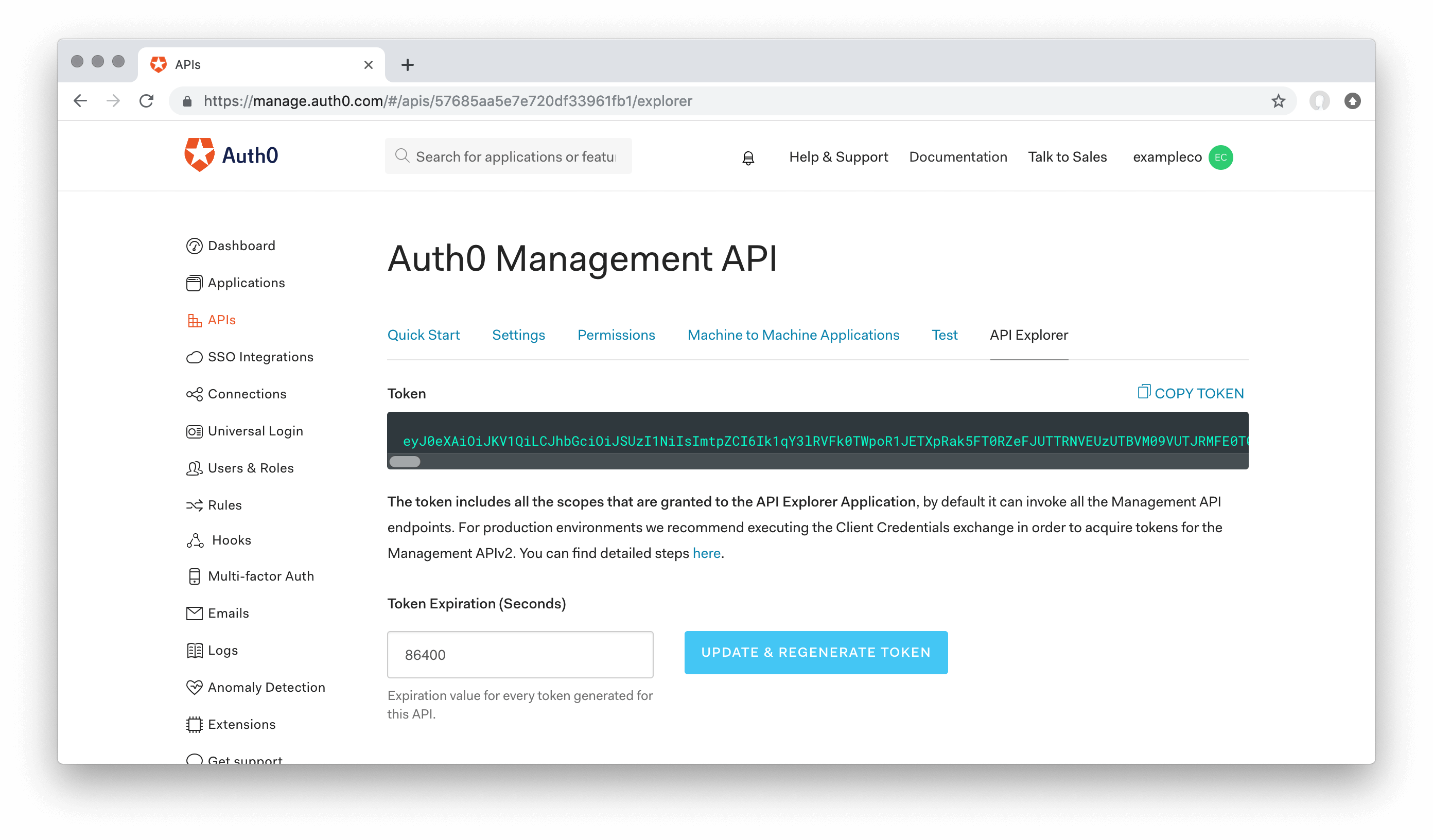Auth0のManagement APIの利用時の話です。
前回の記事だとアクセストークンを直指定だったので、時間が立つとアクセストークンが切れてしまいます。
API経由で動的に生成する方法を調べたのでメモです。
アクセストークンのテスト
APIトークンを試す際には、公式のGet Access Tokens for Testing
にあるように、管理画面からAPIトークンを取得して直接指定すると良いです。
Auth0でログインユーザーのロール(Roles)を元にハンドリングするRulesを書いてみたの記事で書いてたやり方です。
アクセストークンを動的に生成する - プロダクション
公式のGet Access Tokens for Productionに載っているAPI(https://YOUR_DOMAIN/oauth/token)にリクエストしてAPIトークンを生成して利用できます。
公式サンプル
var options = {
method: 'POST',
url: 'https://YOUR_DOMAIN/oauth/token',
headers: {'content-type': 'application/x-www-form-urlencoded'},
form: {
grant_type: 'client_credentials',
client_id: 'YOUR_CLIENT_ID',
client_secret: 'YOUR_CLIENT_SECRET',
audience: 'https://YOUR_DOMAIN/api/v2/'
}
};
request(options, function (error, response, body) {
if (error) throw new Error(error);
console.log(body);
});
これをRules内(Node.js)で書いていきます。
Rulesに適用する
Auth0でログインユーザーのロール(Roles)を元にハンドリングするRulesを書いてみたのスニペットと合わせるとこんな感じです。
util.promisifyでrequestをpromise化して、async/awaitで利用する形にしました。
async function (user, context, callback) {
const util = require('util');
const requestPromise = util.promisify(request);
console.log(user);
//1. メール確認
if (!user.email || !user.email_verified) {
return callback(new UnauthorizedError('Access denied.'));
}
//2-1. トークン生成
const tokenApiOptions = {
method: 'POST',
url: `https://${configuration.domain}/oauth/token`,
headers: {'content-type': 'application/x-www-form-urlencoded'},
form: {
grant_type: 'client_credentials',
client_id: configuration.client_id,
client_secret: configuration.client_secret,
audience: `https://${configuration.domain}/api/v2/`
}
};
const tokenApiRes = await requestPromise(tokenApiOptions);
const token = JSON.parse(tokenApiRes.body).access_token; //API経由で取得したトークン
//2-2. ユーザーが所属するロールを取得
const options = {
url: `https://${configuration.domain}/api/v2/users/${user.user_id}/roles`,
method: 'GET',
headers: {
'Authorization': `Bearer ${token}`
},
json: true,
};
const roleApiRes = await requestPromise(options);
//2-3. ロール判定
const whiteList = ['role1','role2']; //許可するロール名
const userRoles = roleApiRes.body.map(item => item.name);
const userHasAccess = userRoles.some(value => whiteList.includes(value));
if (!userHasAccess) {
return callback(new UnauthorizedError('Access denied.'));
}
callback(null, user, context);
}
Settingsでconfigrationの値を設定すればOKです。
エラーなど
ClientIDとSecretについて
ちなみに、client_idとclient_secretはテストでトークン作成した際のMACHINE TO MACHINEのものを利用したらうまく行きました。
通常のログインアプリケーションのclient idを利用すると以下のようなエラーが出てうまくいかなかったです。
"error":"unauthorized_client","error_description":"Grant type 'client_credentials' not allowed for the client."
Generate token in WebApi. Error: “Grant type ‘client_credentials’ not allowed for the client.”
function外だとUnexpected token const
function外には基本的に記述はしない方が良さそうです。
const util = require('util');
const requestPromise = util.promisify(request);
async function (user, context, callback) {
・
・
・
省略
・
・
・
}
{
"code": 400,
"message": "Compilation failed: Unexpected token const",
"error": "Unexpected token const",
・
・
・
省略
これだとエラーはでなかったです。
async function (user, context, callback) {
const util = require('util');
const requestPromise = util.promisify(request);
・
・
・
省略
・
・
・
}


